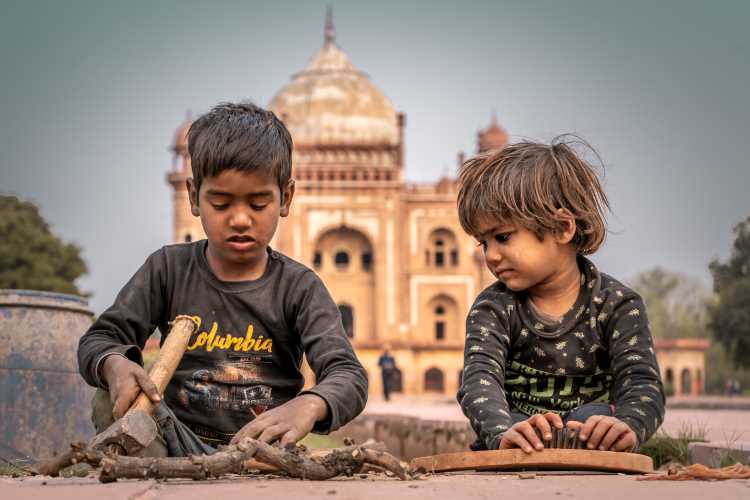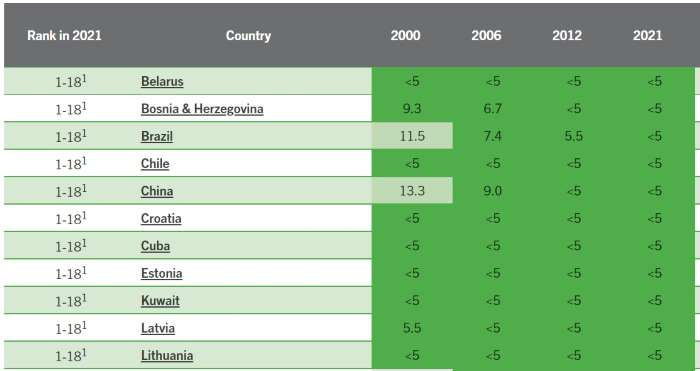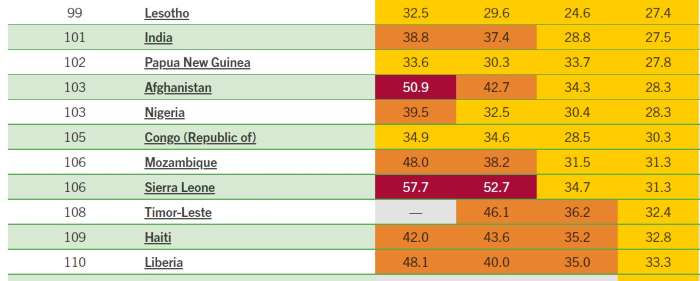
Towards a common household database: India slipped to a dismal rank of 101 among 116 countries in the Global Hunger Index of 2021 after gaining consistently to reach a respectable 55th rank a decade back. Instead of squabbling over the methodology and details, policy makers should go back to the drawing board and figure out why stunting and deaths under 5 years of age are not declining despite logistical and financial support provided by the government.
The government is spending huge amounts for universal immunisation, supplementary food for pregnant women and lactating mothers, supplementary food for children under 5 years through Anganwadis, mid-day meals, and the all-encompassing public distribution system that covers 80% of the population. Targeting each of the households is key to the impactful implementation of these schemes. It’s time to move away from ‘one size fits all’ programme rollouts.


READ I Climate change: World must accept 2060 net zero deadline
Common household database a runaway success
The common household database (SAMAGRA) initiated by the Madhya Pradesh government is now being implemented in eight states. This system enables policy makers to have real-time data on each member of the household. It offers verified data on family members, caste, BPL status, and gender. It is upgraded for birth, death, addition or subtraction of members of the household due to marriages, splits in family or migration.
The other vertical columns are used by different line welfare departments. So, health will work on 6-7 columns, covering institutional delivery, and link to labour department for wages during maternity period, and insurance for death of a family member. Thus, all real-time health data is available. Arogya healthcare insurance will have its vertical column on the same common household database, instead of creating a silo.
Similarly, departments administering related issues such as piped safe drinking water status, toilets, access to education, scholarships, mid-day meals, old-age pension work on their independent vertical columns. The open ration card is also based on the same concept, but data will be stored separately unlike in SAMAGRA which integrates all data related to a household.
READ I Futureproofing businesses: A 5-point cybersecurity checklist for MSMEs
Integration of databases can work wonders
This integrated system can access the various welfare programmes enjoyed by a household. It enables better targeting. The data masks and thus retains privacy. Adopting of SAMAGRA system with unique IDs for households and individual members will relate members to the household and helps better planning. Aadhaar is used only as an identifier to avoid double entries. The bank details are also masked, enabling all the G2P payments.
In India, data generated by different departments get stored separately. So, departments use absolute numbers to claim success of a programme even when they fail to meet most objectives. The government must come out of denial to correct the system for better targeting of benefits, so that it can refute reports based on facts. If India is slipping in ranking, it means other countries are doing better. SAMAGRA – a common household database will enable a course correction on implementation of schemes for faster and sustainable improvements on all human development indices. The software developed by NIC is in use, thus it can be replicated at no cost.
Better targeting can be achieved by evolving suitable models of intervention and real-time feedback on the progress. A common household database is the surefire way of ensuring the success of welfare schemes as well as the identification and development of livelihood opportunities for India’s young population.
(Dr Aruna Sharma is a Delhi-based economist and policy analyst. She is an Indian Administrative Service officer of the 1982 batch retired as Secretary, Government of India.)
Dr Aruna Sharma is a New Delhi-based development economist. She is a 1982-batch Indian Administrative Service officer. She retired as steel secretary in 2018.

